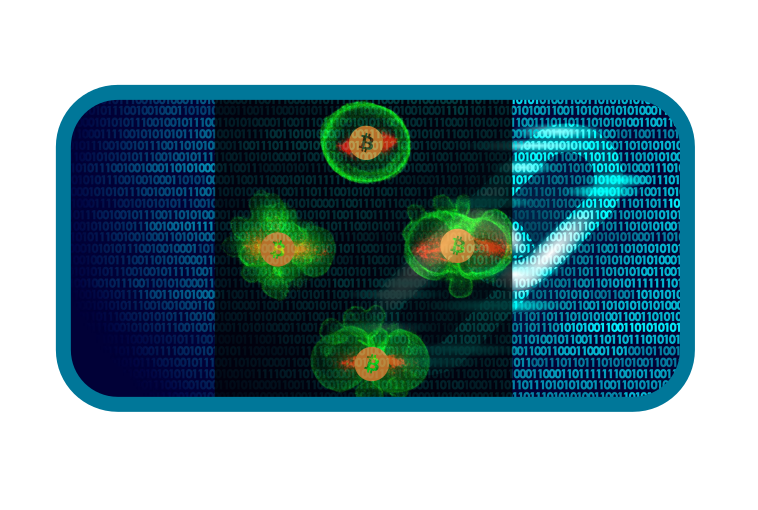Cryptography
Ralph C. Merkle is a computer scientist. He is one of the inventors of public key cryptography, the inventor of cryptographic hashing, and more recently a researcher and speaker of cryonics.
Merkle devised Merkle’s Puzzles, a scheme for communication over an insecure channel, as part of a class project.The scheme is now recognized to be an early example of public key cryptography. He co-invented the Merkle–Hellman knapsack cryptosystem, invented cryptographic hashing (now called the Merkle–Damgård construction based on a pair of articles published 10 years later that established the security of the scheme), and invented Merkle trees. The Merkle–Damgård construction is at the heart of many hashing algorithms.
In cryptography and computer science, a hash tree or Merkle tree is a tree in which every leaf node is labelled with the cryptographic hash of a data block, and every non-leaf node is labelled with the hash of the labels of its child nodes. Hash trees allow efficient and secure verification of the contents of large data structures. Hash trees are a generalization of hash lists and hash chains.
Demonstrating that a leaf node is a part of a given binary hash tree requires computing a number of hashes proportional to the logarithm of the number of leaf nodes of the tree;this contrasts with hash lists, where the number is proportional to the number of leaf nodes itself.
The concept of hash trees is named after Ralph Merkle who patented it in 1979.
The initial Bitcoin implementation of Merkle trees by Satoshi Nakamoto applies the compression step of the hash function to an excessive degree, which is mitigated by using Fast Merkle Trees.
Listen to this episode of the Blockcast to learn how Ralph believes cryptography and blockchain technology will impact global industry and how he first conceived of his ideas behind Merkle Trees, one of the greatest inventions in cryptography.
#frustration #pattern #cryptography #prediction market #governance #bugs #quantum #clock
Molecular nanotechnology
The central objective of molecular manufacturing is the design, modeling, and manufacture of systems that can inexpensively fabricate most products that can be specified in molecular detail. This would include, for example, molecular logic elements connected in complex patterns to form molecular computers, molecular robotic arms or Stewart platforms (e.g., positional devices) able to position individual atoms or clusters of atoms under programmatic control (useful if we wish to make molecular computers and other molecular manufacturing systems), and a wide range of other molecular devices. A central concept for achieving low cost in molecular manufacturing is that of massive parallelism, either by self replicating manufacturing systems or convergent assembly Source: http://www.merkle.com/
The laws of physics should allow us to arrange things molecule by molecule and even atom by atom, and at some point it was inevitable that we would develop a technology that would let us do this
Ralph Merkle
Ralph Merkle, a leading expert in nanotechnology, gives a non-technical introduction to nanotechnology and the future of manufacturing at the atomic level.
Bitcoin
Ralph Merkle quoted: “Bitcoin lives and breathes on the internet. It lives because it can pay people to keep it alive. It lives because it performs a useful service that people will pay it to perform. It lives because anyone, anywhere, can run a copy of its code. It lives because all the running copies are constantly talking to each other. It lives because if any one copy is corrupted it is discarded, quickly and without any fuss or muss. It lives because it is radically transparent: anyone can see its code and see exactly what it does.”
Arnav Vohra’s report analyzed Merkle’s statement and the conclusion was “the crypto networks follow Darwin’s Theory Of Evolution“. Ralph Merkle went a step forward saying: If the crypto networks as Bitcoin follows the Darwin process an evolution could be expected, it seems inevitable that Darwinian selection will be applied, so prediction market could be used for governance in order to maximize the well-being of everybody.
Source: DAO democracy and governance version 1.9
Democracy currently doesn’t have the ability to respond quickly and reliably to anything new or different. It takes a long time. How we can improve the governance process?
Ralph MERKLE
read more
Note : This post is inspired from our study of blockchain technology
Featured image modified from TheJCB is licensed under CC BY-NC-SA 2.0 kchain technology
Continue the discussion here
